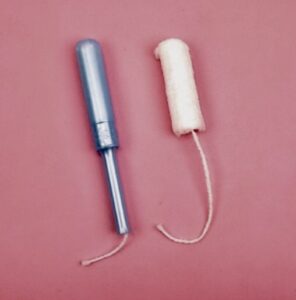Have you noticed pink discharge, during your period or even after its over? For women, vaginal discharge is part of a normal monthly cycle. It changes in amount, color and texture at different times in the month. But when that period blood color changes to pink, it could be a sign of a bigger problem brewing.
Understanding what you period blood color means to your health is so important, we're devoting a whole blog to the topic. And we're not alone. Recently, the Period Harmony startup went viral on TikTok by introducing a uterus-shaped puppet, Uri (pictured at right) who teaches women about important factors that impact their uterine health. (Favorite subjects include changes in discharge, period blood color, endometriosis, fibroids and more.) Want to join the viral fun? Check out Uri's TikTok messages here. Then, keep reading to learn more about what changes in discharge could mean for your overall health. 
Most of the time, the blood you discharge during menstruation is dark red. That's because it's a mix of blood and endometrial tissue that built up all month long.
But many women experience discharge outside of their periods. If you notice mid-cycle vaginal discharge, it's hard to tell what's going on. Is it your period coming early? Or is it discharge? Here's where paying attention to color can help you get a better picture of your health.
You see, as we mentioned, period blood is usually dark-red. In contrast, spotting shows up more like pink vaginal discharge. If you're spotting, the discharge will also be less heavy. And it should come and go, instead of lasting for a few days.
If you think your pink discharge is spotting, here are the times when you should expect that discharge and not show concern:
First, it's normal to spot at the very start or end of your monthly cycle. Typically, you'll also have some spotting when you release an egg, because your estrogen levels drop at that moment. You also may spot just before ovulation, or right after ovulation. If spotting develops after you ovulate, it could also mean that you're pregnant (this is called implant bleeding.)
Now, these are all times when spotting is a normal part of your menstrual cycle. But, sometimes, pink discharge is a sign of an underlying health condition. And if that's the case, it's best to see your doctor right away.

Pink vaginal discharge usually contains trace amounts of blood. And bleeding outside of your period could be a sign of a problem.
If you are experiencing pink discharge, you should see your doctor right away. The color and spotting could mean that you have:
Because pink discharge could indicate so many different conditions, it's important to bring up this change with your doctor. The only way to know the cause is to investigate with your medical care provider.

Sometimes, pink discharge isn't a between-periods problem. At certain points during your period, your flow may become thin, light and pale pink instead of red in color. Often, this is a normal development. Your flow tends to be lighter at the end of your period. And many women experience a light, pale flow in the first day of their periods, too.
Other times, however, this change in color could mean you have a health problem. If you have low estrogen levels, your period flow may appear more pink than red. Or, if it's just a lighter red, almost diluted, it could be a sign of anemia. And, since anemia is a common side effect of fibroids, this should be a sign it's time to see your gynecologist.
Now, we know that some of these changes in your discharge or flow may be subtle. So we don't want you to spend your time analyzing your personal rainbow of colors. Instead, try this advice as a guideline. Pay attention to your body's personal 'normal.' Then, if you notice a change that seems out of the ordinary, bring it up with your doctor at your next check-up, just to rule out problems. Just remember: if any of these changes cause you severe pain, or interfere with your daily life, don't wait around for your next annual visit. Instead, schedule an appointment with your Houston fibroid specialists right away: you should never wait around for help!
As leading fibroid specialists in Houston, we can help you get back to doing the things you love – free of pain and symptoms associated with this diagnosis.

Scheduling
Please contact our dedicated specialists to schedule a consultation today.
2025 Houston Fibroids. All rights reserved. Website Design by Healthcare Success